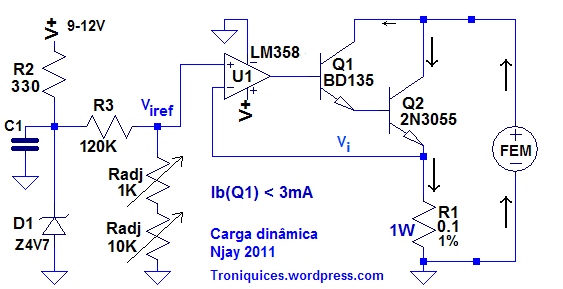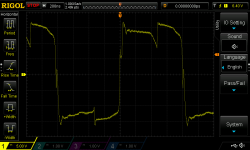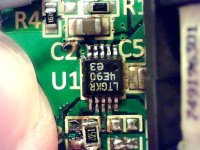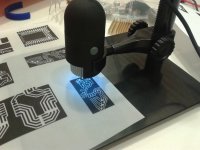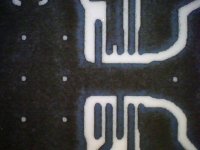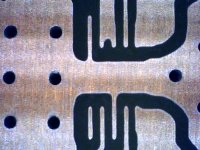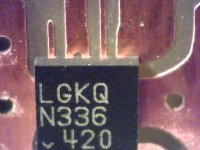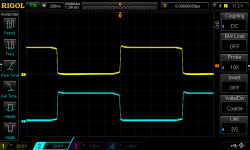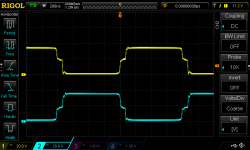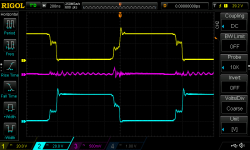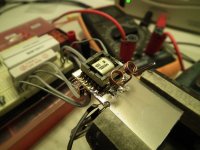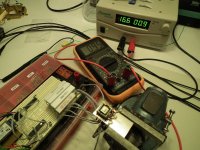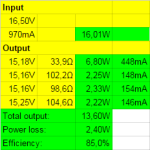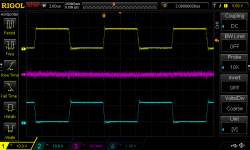Time for a small update. I made a new PCB again, this time from some never presensitized PCB material which gave better results. I also tested my tin plating solution which I bought a while ago, works great.
Anyway, I'm into the RC snubber business now. The switch nodes experience heavy ringing and this causes anormalities in the LT3999. So I need to add a snubber to the switch nodes. One way is to add 1 snubber connected to each switch node. The other way is to add 1 snubber from each node to GND. I get different results, and need to figure out the best way to do it. The snubbers I have tried so far, can give awesome results but will raise the input current with 100mA which is way too much.
The snubbers give different results when I connect the outputs in different configurations. I also found that the output diodes play a big role on the ringing. The FMKA130L diodes I switched to, must be kinda slow to reverse recover (no data about this in the datasheet), because I tried switching to S320 diodes which does have reverse recovery data in the datasheet (14-30ns) and this removed a lot of the switching abnormalities under certain conditions.
So where does this leave me now? Well, I know the output configuration and snubber configuration is somehow connected, this is good because I will be using another output configuration for the brain power.
I know I need to get hold of some snubber capacitors (ceramic C0G types perhaps?) and snubber resistors (broader range of values than I got now) to be able to get this right.
I will redesign my board once again and try to further reduce the stray inductance between LT3999 and the transformer. I have ideas for 2 different layouts and will be testing both of them.
I got my information about how to calculate RC snubber values from these links:
http://www.maximintegrated.com/en/app-notes/index.mvp/id/3835
http://www.ti.com/ww/en/analog/power_management/snubber_circuit_design.html
http://www.digikey.com/en/articles/techzone/2014/aug/resistor-capacitor-rc-snubber-design-for-power-switches
Of course the different sources have to make life hard for me and raise further questions:
- Use film or ceramic C0G capacitors for the snubber?
- In the calculation of the parasitic inductance, use the stray capacitance AND the added capacitance or only the stray capacitance?
Any help on the snubber calculation from zombiess or HighHopes perhaps?




